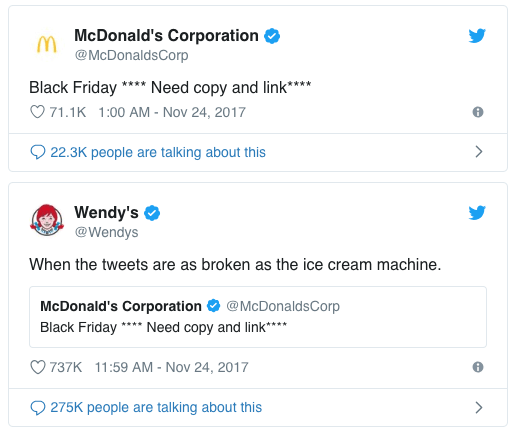You’ve probably got what seems like a thousand things to deal with on a daily basis, so updating your organization’s online presence is likely the last thing on your mind. Unfortunately, all the other efforts you’re working on won’t matter as much if your online persona could do with a refresh.
Now more than ever, customers rely on an organization’s online presence to understand who they are, how they can help and if they’re the best for the job at hand. That means a robust presence online embodying your brand’s authentic voice and mission is crucial to staying top-of-mind and increasing engagement with your community. Here are a few ways you can ensure your brand is leaving its best digital footprint across the spectrum of online platforms used most often by companies and nonprofits.
Social Media
We talk a lot about the ways companies can use social media more effectively. These channels are some of the best tools for connecting with your audience where they’re at (American adults spend more than 2 hours per day on social media!) and positioning yourself as the local expert on topics related to your work. However, it can also be the fastest way to turn people away from your services. Ensuring everything you post or share is relevant to both your work and your audience is where you’ll find the sweet spot for your social presence.
One vital aspect of social sharing is the idea that you showcase your brand personality in different ways through different platforms. “But wait!” you exclaim, “I thought we were supposed to have one, consistent brand voice!”
That’s absolutely true, and you should take time and care to hone your brand’s voice to truly reflect your values. But your brand has its own voice just like you, and you wouldn’t talk to your boss or your mom the same way you talk to your best friends, right? Same concept applies here.

Take, for example, the four most common social sharing channels: Facebook, Instagram, Twitter and LinkedIn. You can think of Facebook and Instagram as the everyday casual conversations you have with coworkers: not too formal but not completely informal either. You watch your Ps and Qs, but sharing something funny or a quick personal story isn’t out of the question.
If Facebook and Instagram are coworkers, LinkedIn is the big boss. You want to share professional insights and important company information such as open positions or photos of a project you just wrapped up, but dial back the informality in favor of a more buttoned-up tone.
Twitter, then, would be the buddies you meet up with after work. Take some liberties, stretch your wings and maybe even crack a joke (if and when it makes sense for your brand to do so). Even the Free Application for Federal Student Aid (FAFSA)—a fairly traditional sounding brand—has made waves recently by using Twitter as a way to engage in a laid-back, humorous dialogue with their audience.

The Wendy’s Twitter account is almost as famous as the chain itself for the way they engage with their audience, and they’ve got more than 3.07M followers to prove it. In this screenshot from their feed, they jokingly reply to a tweet without deviating from their usual (snarky but fun) tone.
Lastly—but most importantly—is to engage the customers and potential customers who take the time to reach out to you. Answer their questions, reply to their comments (especially the bad ones) and make sure they know you hear them. It’s the easiest and most effective way of humanizing your online presence to your audience.
Your Website
Your audience needs two things from your website: ease of use and accurate, up-to-date information. Without those two key components, your online presence will take a hit and you’ll be seeing a high bounce rate as visitors skip to better sites.
Ease of use covers a wide swath of user-friendliness including, but not limited to, mobile responsive design, a layout that makes sense, easily readable text and ensuring it never takes more than two clicks to find contact information.
Accurate, up-to-date information can mean any number of things. Whether it’s updating the stats about your year’s performance, seeking out and fixing broken links or updating your “About Us” page, your customers will be looking for a company that takes a proactive approach to publishing correct, relevant information. Be their source for truth and knowledge!
If you’re having trouble discovering what needs updating, have a trusted friend or employee look over and critique your site. It’s easy to overlook issues that may have been hiding in plain sight for years simply because you see your site so often—having a fresh pair of eyes to look it over is a priceless resource.
Get A Blog
Blogs are a great way to talk with your website visitors about everything from goings-on inside your company to insider industry tips to showcasing your work or community outreach projects. If you’ve got a blog, though, you’ve got to use it. Regularly releasing new content is the only way to make blog writing an effective tool to reach your audience online. If your latest blog post shows a publish date of October 2017, your customers are going to think you either went out of business or stopped doing things important enough to share with them—neither option is a good look.
Consider these few tips for crafting your blog content. First, make it relevant to your audience. Give them insider tips or show them how you’re giving back to their communities. Linking to other articles is another way to build trust among your readers. By backing up your thoughts and opinions with content from other sources, you’re proving to them you’ve done your research and know what you’re talking about.
Also, make sure your content is easily digestible. Use big, bold text for headings and subheadings, and break your copy into small paragraphs. Nothing scares away a would-be reader like a clunky, novel-sized chunk of text. Using images is another easy way to break up text.
For example, we’ll insert a picture of a cute dog right underneath this, which will give your eyes a break from the massive amounts of learning you’re doing and encourage you to keep going. And be sure you have the rights to any photos you use.

Look at this little scamp! She’s ready for hi-fives because you’re almost done reading this article. We got this photo from Getty Images, a great resource for stock photography.
Consistency is Key
The most important thing to consider when cultivating your online presence—regardless of platform—is keeping your messaging consistent. Talk about the things that matter to your organization. These topics may not be exactly what speaks to you personally, but it’ll speak to your audience. However, we don’t recommend sharing thoughts on things you either: 1) don’t care about or 2) don’t know much about, even if the topic is genuinely tied to your organization’s purpose. It’s really easy for users to spot when someone isn’t being genuine online, so make sure everything you post is both tied to your mission and something you hold sincere beliefs about.
When people are deciding whether or not to work with you, they’re going to go online to do their research before deciding if you’re the right choice. They want to see what you do, what your customers have to say, what kinds of advice you’ll give, who’s on your team and how you do what you do—and that’s just the basics. Your customers are going online to get to know you, so make sure you’re giving them enough current content to answer their questions and position yourself as the go-to for your services.
If you need some additional help crafting your organization’s online presence, we may know someone who can help. It’s us—we’re the ones who can help. Tweet ya’ later!
